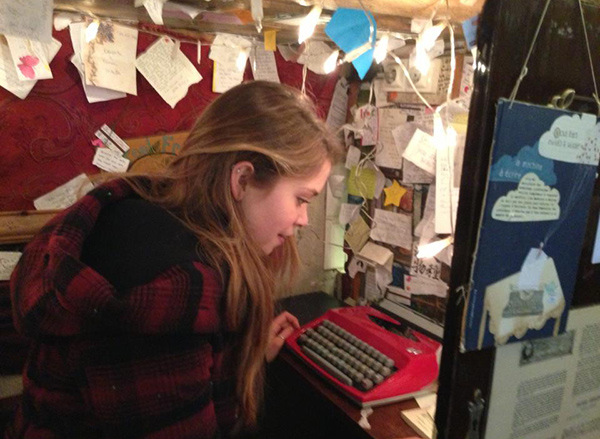
Stanford student explores the arts way off campus
Massive public murals typically aren’t the first image that comes to mind when the city of Lyon is mentioned. Located in east-central France between two major rivers, the Rhône and the Saône, Lyon is renowned for its Renaissance architecture, silk production and a plethora of local sausage specialties (calf’s feet anyone?).

Camille Brown
Yet a lesser-known gem of Lyon lies about 10 minutes outside the main city and in its suburban (or banlieue) neighborhoods: a massive public mural series by the late Tony Garnier. Garnier, an artist, architect and urban planner born and raised in Lyon, constructed a series of apartment buildings in the early 20th century that were designed to improve living conditions for the predominantly low-income working class population that lived in the outer neighborhoods of the city. In the 1980s, when the area was in danger of destruction, a student group based out of Lyon known as CitéCréation was inspired by the murals of Diego Rivera, José Clemente Orozco and David Alfaro Siqueiros, and decided to create a similar space of public artistic expression in the banlieues of Lyon.
“When we give pride to a space, a space which didn’t exist for the rest of the town before … we feel we have succeeded.”
Thus, a mural series was undertaken by CitéCreation in the late 1980s to depict a vision of what a future urban utopia would look like for the city. Purposefully placed on the walls of mass apartment complexes on the outside of the city – today known as HLM (Habitation à Loyer Modéré) – these murals provided a sense of hope, fantasy and cultural heritage in a quarter of the city that is typically inhabited by low-income working class residents of Lyon.

..
Musée Urbain Tony Garnier is an outdoor “museum” consisting of 30 murals on the sides of the Garnier buildings. The immense works depicting industrialism, scenes of Lyonnaise culture throughout history, and abstract concepts of art, community and movement instantly brightened up the quarter known for drug use, violence and rioting in the 1980s.
As CitéCreation’s spokesman Halim Bensaïd notes, “It completely transformed the quarter. You can stop anyone on the street there and the response will be unanimous. It has given something back to the residents – pride – a word that can be both terrible and very beautiful. When we give pride to a space, a space which didn’t exist for the rest of the town before … we feel we have succeeded.”
Further information on these murals is available at http://www.francetoday.com/articles/2011/10/23/the-murals-of-lyon.html
